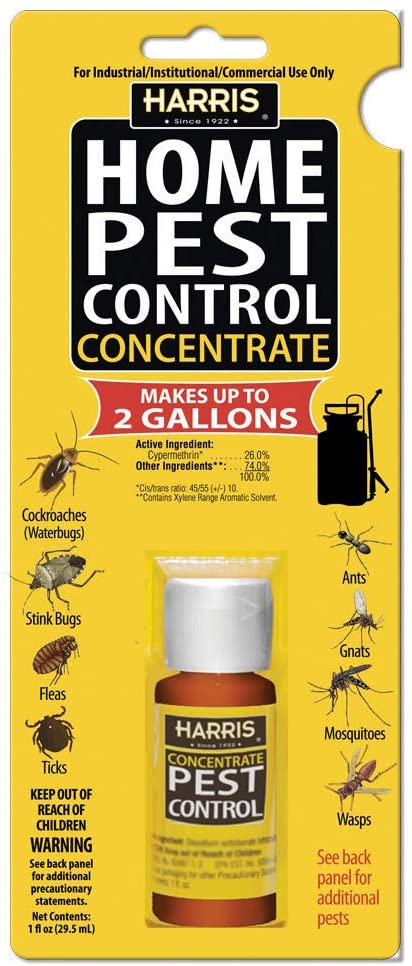A1 Pest Control Charlotte NC Bed Bugs - Professional Extermination Services
A1 Pest Control Charlotte NC Bed Bugs - Professional Extermination Services
Blog Article
Bed Insect Therapy Breakdown: Comparing Chemical Vs. Non-Chemical Solutions
In the world of bug control, specifically when taking care of the relentless concern of bed bugs, the choice in between chemical and non-chemical therapy services can be a critical one. Both strategies supply distinct advantages and downsides, influencing variables such as efficiency, safety and security factors to consider, and total cost. By checking out the nuanced information of each method, a clearer understanding of which course to seek in dealing with a bed insect problem can be attained.
Efficiency of Chemical Therapies
Chemical therapies for bed pest problems have actually been widely acknowledged for their rapid and powerful efficacy in eliminating these bugs. When considering the effectiveness of chemical treatments, it is crucial to comprehend that they can provide a extensive and quick option to a bed pest trouble.
Moreover, chemical treatments have the advantage of using residual impacts, suggesting that they can remain to eliminate bed pests even after the preliminary application. This recurring activity is specifically beneficial in combating any potential re-infestations. Additionally, the fast action of chemical therapies can bring relief to individuals dealing with severe bed insect problems, allowing them to regain control of their living areas quickly.
Security Worry About Chemical Solutions
One critical facet that requires careful factor to consider when utilizing chemical services for bed insect therapy is ensuring the safety and security of residents and the environment. While chemical treatments can be efficient in getting rid of bed insects, they may position threats if not dealt with appropriately. One of the main safety and security worry about chemical remedies is the prospective harm they can trigger to human health and wellness. Exposure to certain chemicals made use of in bed insect therapies can lead to respiratory system problems, skin inflammation, or other negative reactions, particularly in people with pre-existing problems or level of sensitivities. In addition, improper application or dose of chemical pesticides can result in poisonous deposits remaining in the treated location, positioning long-term wellness dangers to owners.
Moreover, the environmental effect of chemical remedies is one more significant factor to consider. Some chemicals made use of in bed pest treatments may be unsafe to beneficial pests, wildlife, and communities if they seep into the soil or water systems. It is crucial to use chemical therapies deliberately, adhering to safety guidelines, and considering much less hazardous choices to reduce these dangers and guarantee the safe and effective administration of bed bug invasions.
Advantages of Non-Chemical Strategies
Thinking about the prospective safety concerns and ecological influence linked with chemical services for bed bug therapy, exploring non-chemical approaches provides a promising choice with several distinct advantages. Non-chemical treatments are environmentally pleasant, as they do not contribute to air or water contamination, making them a sustainable selection for insect control.
In addition, non-chemical remedies can be effective in targeting bed pests, consisting of hard-to-reach locations where chemical therapies might not pass through - A1 exterminators charlotte nc. Techniques such as warm treatment, this page vacuuming, vapor cleansing, and bed mattress coverings offer complete elimination without the use of harmful chemicals.
Limitations of Non-Chemical Treatments

Additionally, non-chemical treatments usually require several applications to achieve effective obliteration. This can be taxing and might not constantly guarantee total removal of all bed pests and their eggs, particularly in concealed or hard-to-reach locations.
Additionally, the success of non-chemical treatments heavily depends on proper execution and thoroughness, which can be challenging for individuals without professional experience. Inadequate application of non-chemical techniques might cause insufficient removal, bring about persistent invasions and the demand for additional treatments.
As a result, while non-chemical therapies have their benefits, it is important to acknowledge these constraints and consider them when identifying the most efficient technique for handling bed insect invasions.
Cost Contrast: Chemical Vs. Non-Chemical Options
Provided the restrictions related to non-chemical treatments, an important facet to assess in the context of bed pest monitoring is the price contrast between chemical and non-chemical options. Chemical therapies commonly include the application of insecticides by experts, which can range from $250 to $900 per area, depending upon the extent of the invasion and the size of the area to be dealt with. In comparison, non-chemical treatments like heat therapy or steam can be more costly, with prices ranging from $1,000 to $6,000 for an entire home. While the initial expense of chemical treatments might appear reduced, multiple therapies might be needed to fully get rid of the infestation, possibly enhancing the total expense. On the various other hand, non-chemical alternatives may give a more lasting and eco-friendly remedy, although click over here now they can be cost-prohibitive for some individuals. Ultimately, when considering the expense of bed bug treatment alternatives, it is necessary to consider the ahead of time expenditures against the effectiveness and long-term sustainability of the selected technique.
Conclusion

Considering the prospective security concerns and ecological influence associated with chemical services for bed pest check this site out therapy, checking out non-chemical methods provides an encouraging alternative with a number of distinctive advantages.Given the restrictions connected with non-chemical treatments, a crucial aspect to review in the context of bed pest monitoring is the cost comparison between chemical and non-chemical alternatives. In comparison, non-chemical therapies like warmth treatment or heavy steam can be a lot more pricey, with prices ranging from $1,000 to $6,000 for an entire home. While the preliminary cost of chemical treatments might appear reduced, multiple therapies might be required to completely eradicate the infestation, potentially boosting the general cost.In conclusion, when contrasting chemical and non-chemical bed bug therapy options, it is vital to take into consideration effectiveness, safety, benefits, limitations, and cost.
Report this page